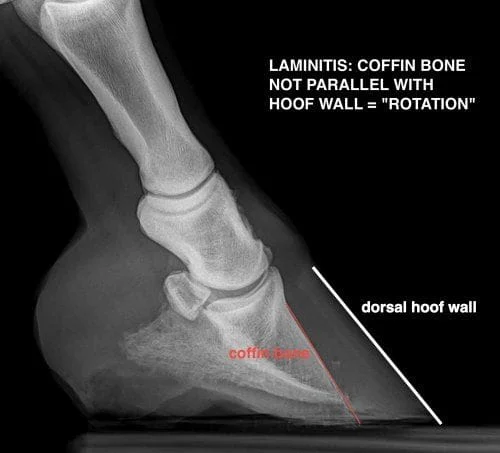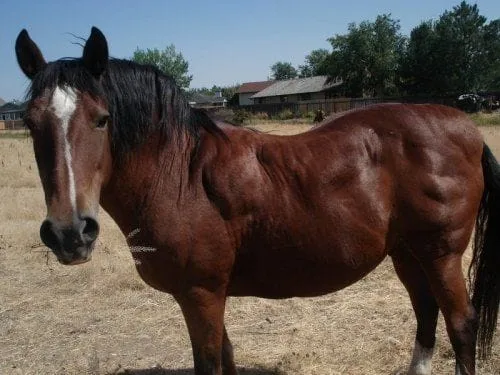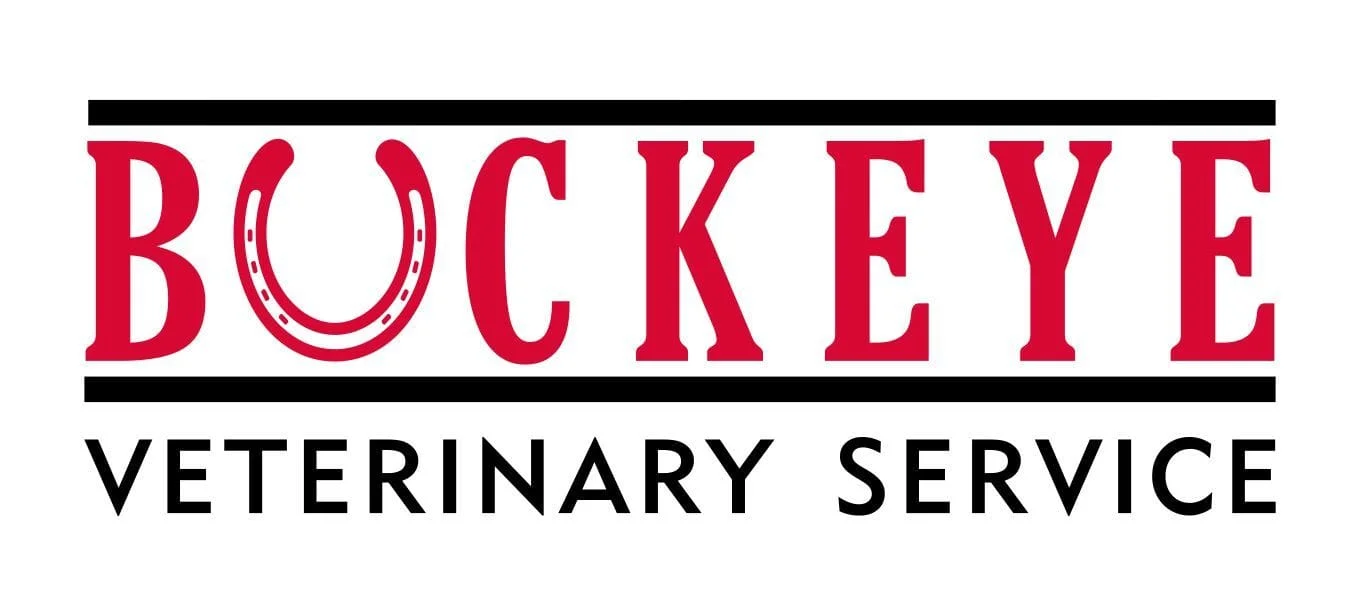Laminitis. Founder. These words, and the disease process they represent, strike fear into the hearts of horse lovers. Within the last several years, a primary cause for laminitis has been identified as Equine Metabolic Syndrome, or EMS.

Metabolic Disease Syndrome is not completely understood, but clinical signs are well known. The typical horse will be middle aged, overweight, with a cresty neck. Adipose (fat) tissue may be accumulated in “fat pads” located at the base of the tail, over the withers/ shoulder region, above the eyes, and on the belly in front of the sheath or mammary glands. These horses or ponies may have a specific ability to survive on less food than normal and are frequently described as “easy keepers”.

Some horses will drink and urinate excessively (polyuria/polydypsia or PU/PD) and they may have a “pot-bellied” appearance. Lethargy or dullness may be recognized by the owner. Sometimes laminitis is the first indication that there is a problem.
The cause has to do with an abnormal insulin response to digestion of carbohydrates (starches or sugars). Insulin helps cells uptake sugar (from the blood) needed for normal function. Insulin resistance may be a component (like Type II diabetes in humans) but it is not definitive. When the pancreas overproduces insulin, and blood levels are very high, laminitis is more likely to occur. This commonly happens after eating lush, green pasture, or gorging on feed (grain overload).
EMS is often confused with Cushing’s Disease, or Pituitary Pars Intermedia Dysfunction (PPID), which will be discussed elsewhere. PPID horse will typically be older, and have a long, curly hair coat that does not shed out; EMS horses do not exhibit this symptom.
A simple screening test for EMS is a fasting insulin level. We recommend giving the evening feed (before 8:00 PM), and then fasting the horse overnight. (They can have water.) Blood is drawn approximately after 12 hours of not eating, and the insulin level is determined. Frequently we also evaluate cortisol and thyroid levels as well. Normal insulin will be in the range of 5-20 u/U/ml. Levels over 60 suggest insulin resistance. We have seen insulin in the 500’s!
Treatment consists of a low carbohydrate diet, weight loss, and exercise. These horses can usually survive without eating a concentrate, living on hay alone. This will help with weight loss and decrease starch intake. Every feed company now has at least one low starch feed, with the primary ingredients being soybean and beet pulp based. Diets with molasses, oats, and corn (to name a few) are going to be higher in carbohydrates. Hay can be soaked in water for at least 20 minutes and then fed to the horse, leaving leached out sugars in the water. Pasture (grass) normally is eliminated or severely restricted.
NO TREATS. Carrots, apples, mints, and many of the commercial horse snacks are loaded with sugar. Sugar free mints can be used in small amounts.
Laminitic horses must recover before they can exercise, as damaged laminae will further tear with weight bearing. A weight tape will help determine pounds lost as the conditioning/diet progresses. Thyroid supplementation may be used for a period of time to elevate the metabolism and increase weight loss.
EMS is not curable, but can be managed with diligent attention. At risk horses/ponies should exercise, lose weight and go on a low starch diet. Grazing muzzles can decrease the amount of pasture consumed. Mowing pastures regularly and turning out before 10AM (when the sun increase grass sugar) can help.
Contact us for a discussion about EMS, Cushing’s Disease, laminitis, and whether your horse is at risk.

